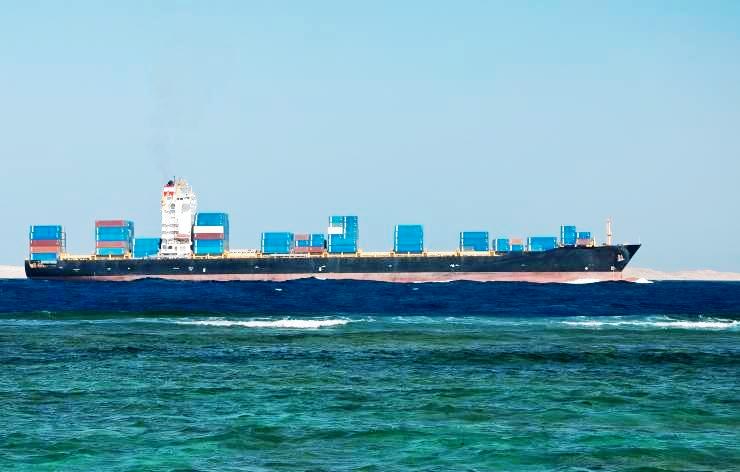Tensions in the Red Sea: the changing scenario in the Middle East.

The US and UK have stepped up airstrikes against Yemeni Houthi militias.
The Anglo-American air strikes were a direct response to the long series of Houthi attacks against civilian ships and boats (merchant and container) crossing the Strait of Bab al-Mandeb, in the Red Sea, in retaliation for the Israeli invasion of Gaza.
The drone and missile attacks conducted by the Shiite Zaydi militias have hit a systemic artery of global traffic, equal to 12% of international trade (including energy) and 33% of global container traffic. These actions caused a significant drop in merchant passages in the area (around 40%) and an average quadrupling of fuel and transport costs, with consequent delays in the delivery of goods (12-15 days more).
The initiative of Washington and London has largely degraded the operational and military capacity of the Yemeni militias, but it is undeniable that all this will not lead to a total reduction in the
scope of the threat represented, nor the risk of the same conditions recurring shortly.
Furthermore, the US and UK strikes have contributed to broadening the geographical scope of the regional conflict beyond the main scenario of Gaza, making the situation even more sensitive to future enlargements and threats. Furthermore, this condition represented a novel factor for all the actors involved more or less directly in the military dynamics, effectively facilitating a favorable change of pace especially for the Houthis and Israel.
A dynamic that is well suited to the Houthis, as it allows them to act with two different hats (dialogue and attack) using the usual tool of the “stick” (now wide-ranging military attacks) and the “carrot” (willingness to continue the national dialogue in Yemen).
This means exploiting the Palestinian cause functionally to justify attacks on global maritime trade, conditioning its strategic capabilities, and exerting new and more multilevel pressure on the United States and Saudi Arabia – actors involved in the Yemeni dynamics. Therefore, the Houthis’ effort to insert themselves into the Gaza conflict is aimed at strengthening its domestic consensus base and curbing internal (loyalist government of Aden) and foreign (USA and Saudi Arabia) opposition, while cementing the positioning and regional status of the movement in the so-called Iranian-led “axis of resistance”, which also includes Hezbollah and Hamas.
The situation is equally advantageous for Israel: the escalation in the Red Sea and a possible encapsulation of Hezbollah in the ongoing dynamic against Tel Aviv has already had the merit of shifting international attention from Gaza and the West Bank. At the same time, all this has allowed greater and more direct involvement of the United States in crisis scenarios, directing the focus on Iran’s role and relations with its regional proxies in Iraq, Syria, Lebanon and Yemen.
At the same time, the escalation of the conflict also reinforces the vision of the conflict carried forward by the Netanyahu executive, which aims to exploit tensions with Iran and its regional partners to remain in power in Tel Aviv for as long as possible. This is despite the clear collapse in the polls and the Prime Minister’s confidence even in the face of his radical government allies.
Tehran itself, which remained essentially on the margins of the conflict between Israel and Hamas, has maintained an ambivalent role of pressure and openness to dialogue, although it continues to profess its disinterest in getting involved in a war with regional potential. However, the activation of the Yemeni scenario – in which in any case the Iranian role remains mostly convergent with the Houthi agenda and with an anti-Saudi function – and, above all, of the Lebanese one – especially if Hezbollah were to be dragged into the Israeli clash – would have undefined but more exasperating effects, in which it would, however, be unlikely to imagine maintaining the ambiguous and opaque strategy like the one prepared up to now by Tehran.
This is the same strategic dilemma that would effectively force the United States to also raise the level of commitment, despite both the presidential campaign for the November 2024 elections has already started with too many unknowns and concerns for the Biden Administration, and Washington’s lack of will to find itself exposed on multiple opposing and contemporary military fronts (Ukraine and the risks of a possible crisis in Taiwan must never be minimized).
A similar scenario is therefore counterproductive for the United States itself, which would not only favour the regional and international propaganda of Iran-Russia-China but would also undermine the popularity – already low – of the White House in the Arab countries.
The latter are suffering from a reduced decline in trust towards their US partner and have long exploited the new context, including that of the Red Sea, to strengthen their quest for non-involvement in the war between Israel and Hamas and reorient its international interests. All without forgetting the risks and repercussions on the respective national public opinions in terms of popularity and legitimacy caused by the ambiguous diplomacy of the Arab actors in the political and military campaign of contrast in Tel Aviv, Gaza and the West Bank.
Therefore, the clear increase in regional tensions and the expansion – at least geographical – of the crisis scenario beyond the Palestinian context, will lead to a clear change of pace between all the actors involved, with the risk of acting in the dark. The danger, therefore, will not only lie in the already evident consequences for international trade, but in the increasingly asymmetric threats to national security and, more generally, to Middle Eastern instability. (Open Photo: The cargo ship transporting containers across the Red Sea.123rf)
Giuseppe Dentice/CeSI



